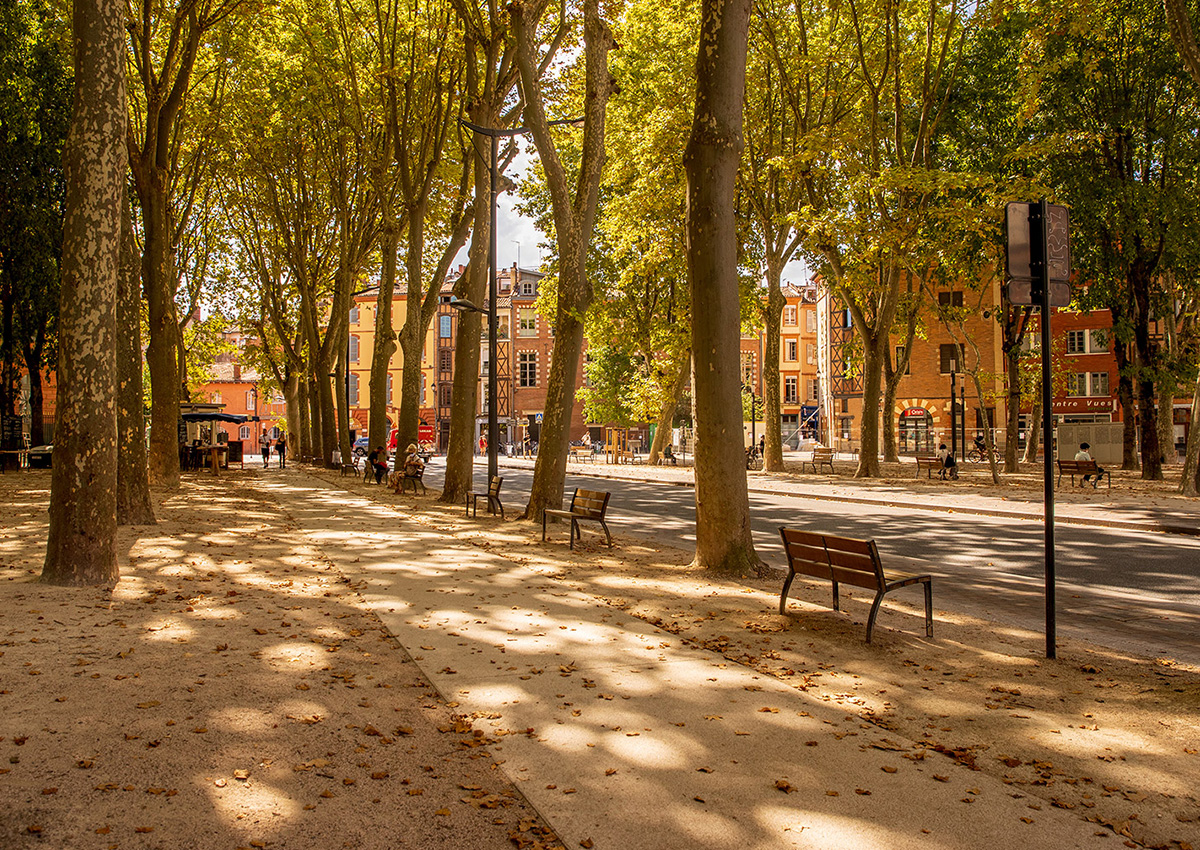Place de Salin
The Salin Square and Parliament Square are two interconnected squares located on the outskirts of the Historic Center of Toulouse, just behind the vanished Narbonne Gate. They are separated by the Palace of Justice, a building from the early 20th century that has recently undergone extensive renovation. This renovation has transformed what was once the main entrance to the courts, facing Salin Square, into a secondary access point.
The project aims to highlight the existing qualities of the spaces, especially the magnificent plane trees in Salin Square, the urban uses such as markets and terraces, and of course, the architectural features of the area.
Currently, both squares, especially Parliament Square, are heavily influenced by car parking. In the initial phase, the north and west facades, which house commercial establishments and terraces, will be freed from the presence of vehicles, while compact parking will be maintained in the eastern part of Salin Square.
In a subsequent phase, the parking area will be reduced to enhance the historical access to the Palace of Justice, with delineation and marking of parking spaces achieved temporarily and flexibly on the new porphyry pavement.
In the center of Salin Square, beneath the grand plane trees, the traditional stabilized ground will be preserved and restored, and special urban furniture will be installed to emphasize the significance of the location.
The public space of Parliament Square is currently a residual area due to its use as a parking lot. Once the parking is eliminated, a few restaurants and cafes, currently nestled among the cars, will be able to promote more civic functions. The urban space will be enhanced with a new noble porphyry pavement and new trees that will provide generous shaded areas during the summer.







The Salin Square and Parliament Square are two interconnected squares located on the outskirts of the Historic Center of Toulouse, just behind the vanished Narbonne Gate. They are separated by the Palace of Justice, a building from the early 20th century that has recently undergone extensive renovation. This renovation has transformed what was once the main entrance to the courts, facing Salin Square, into a secondary access point.
The project aims to highlight the existing qualities of the spaces, especially the magnificent plane trees in Salin Square, the urban uses such as markets and terraces, and of course, the architectural features of the area.
Currently, both squares, especially Parliament Square, are heavily influenced by car parking. In the initial phase, the north and west facades, which house commercial establishments and terraces, will be freed from the presence of vehicles, while compact parking will be maintained in the eastern part of Salin Square.
In a subsequent phase, the parking area will be reduced to enhance the historical access to the Palace of Justice, with delineation and marking of parking spaces achieved temporarily and flexibly on the new porphyry pavement.
In the center of Salin Square, beneath the grand plane trees, the traditional stabilized ground will be preserved and restored, and special urban furniture will be installed to emphasize the significance of the location.
The public space of Parliament Square is currently a residual area due to its use as a parking lot. Once the parking is eliminated, a few restaurants and cafes, currently nestled among the cars, will be able to promote more civic functions. The urban space will be enhanced with a new noble porphyry pavement and new trees that will provide generous shaded areas during the summer.